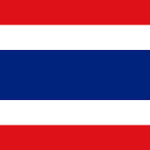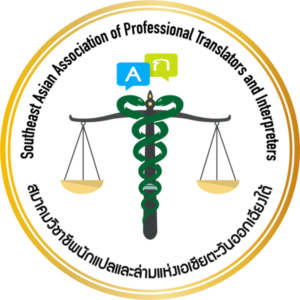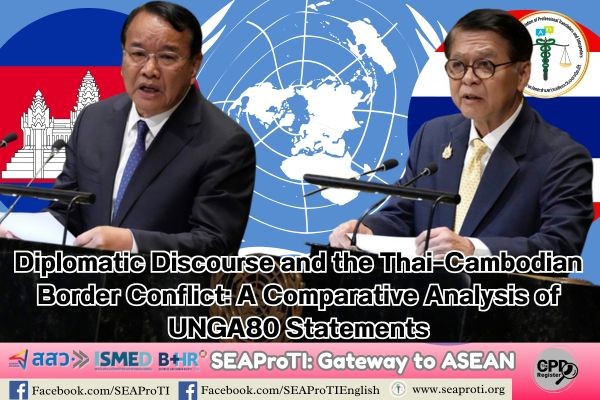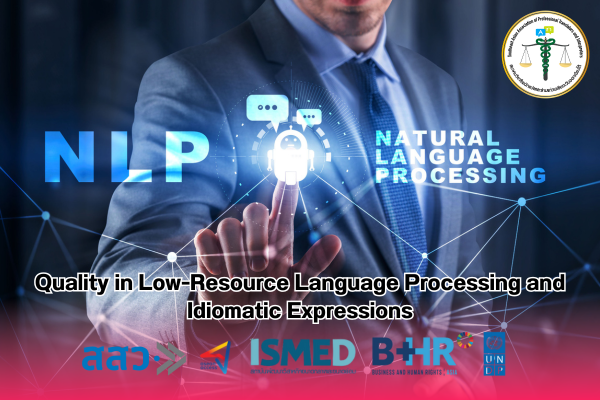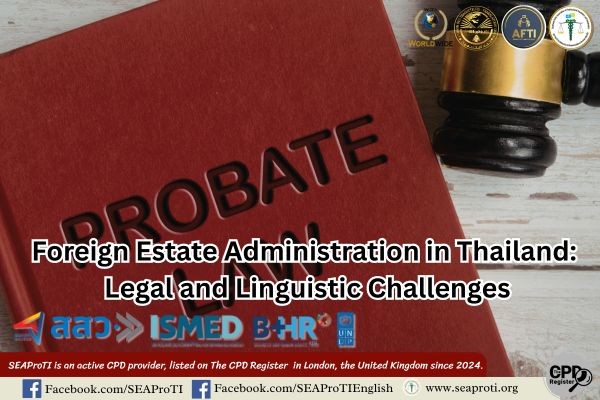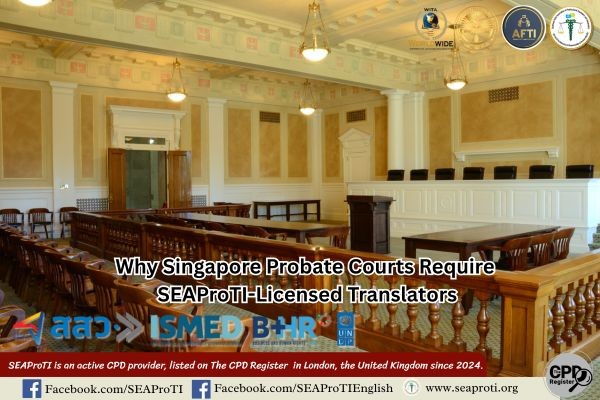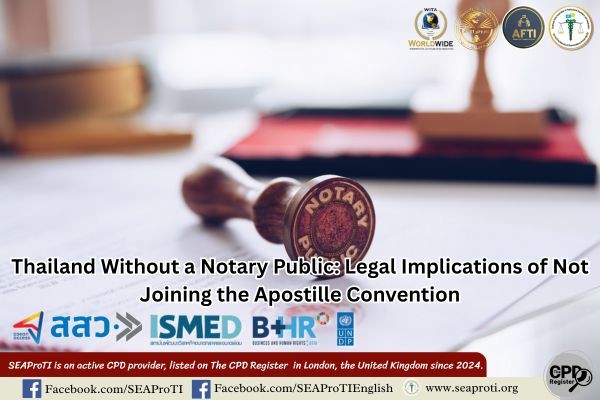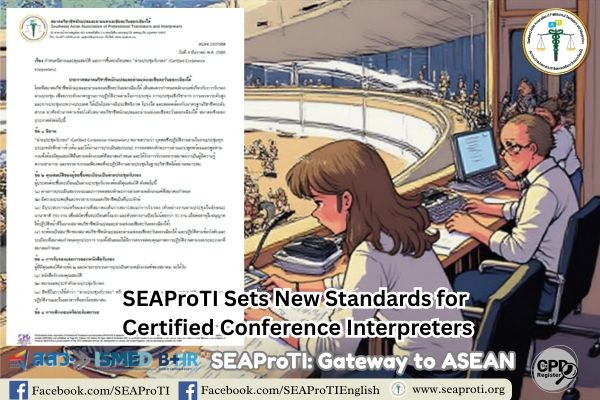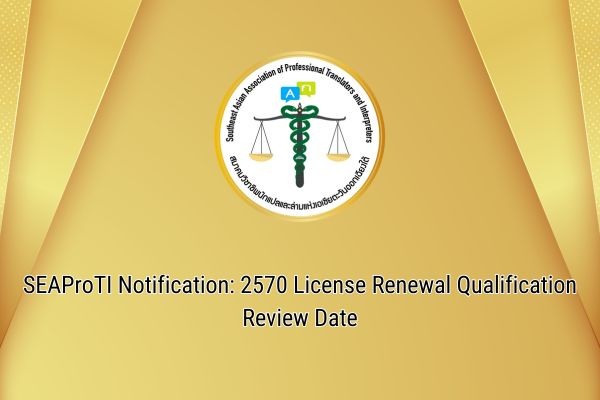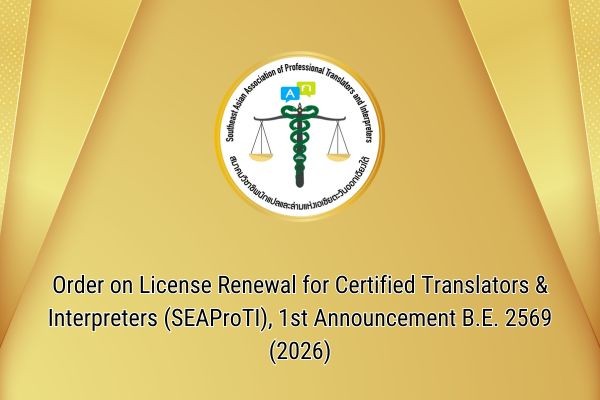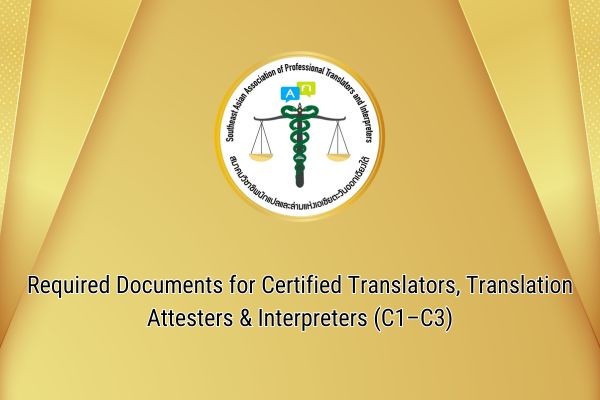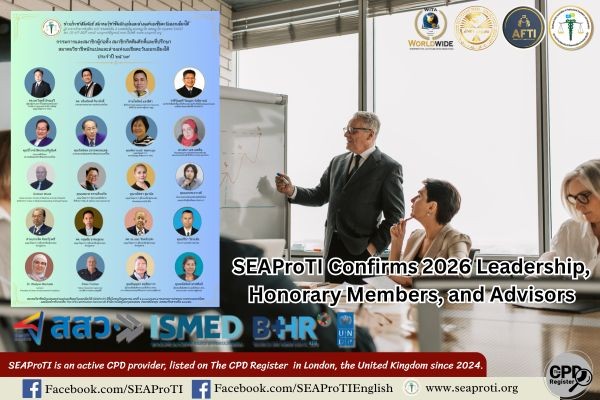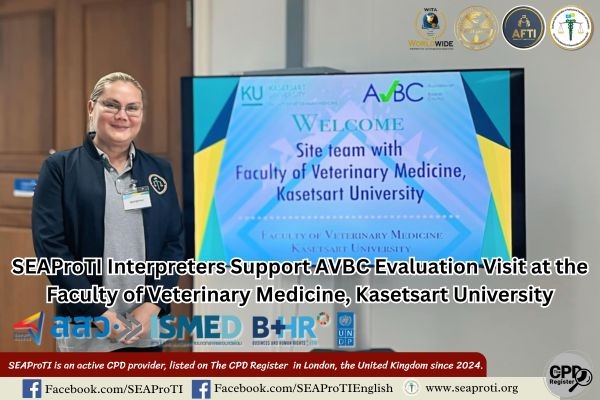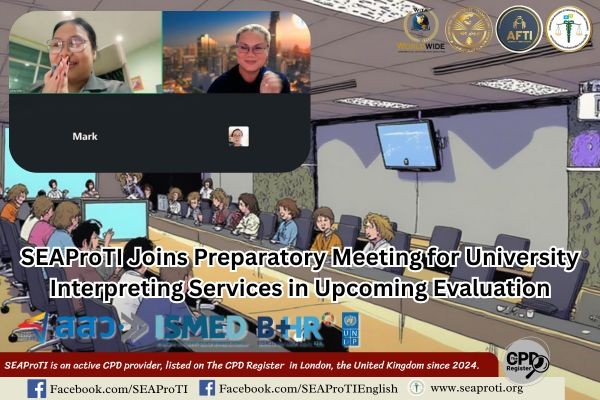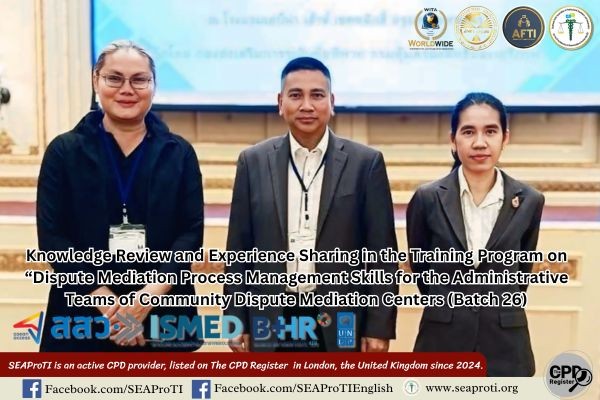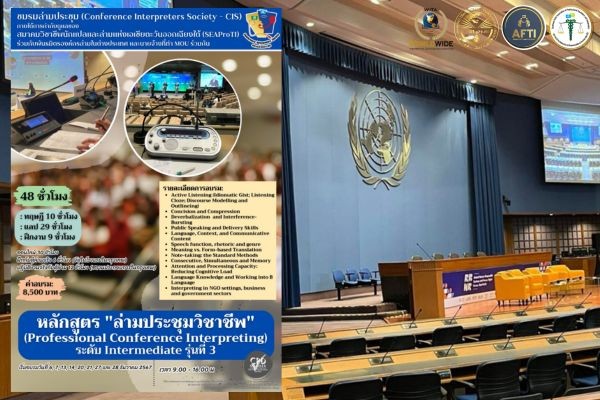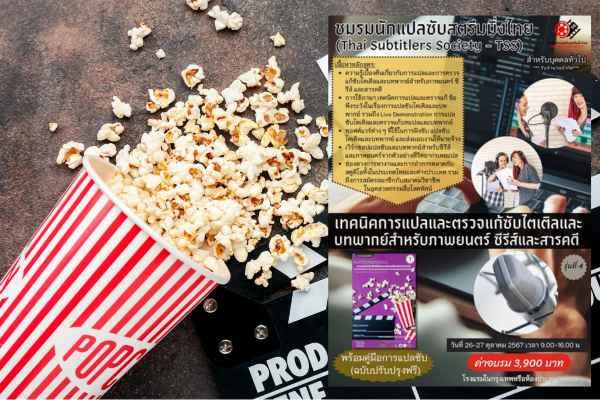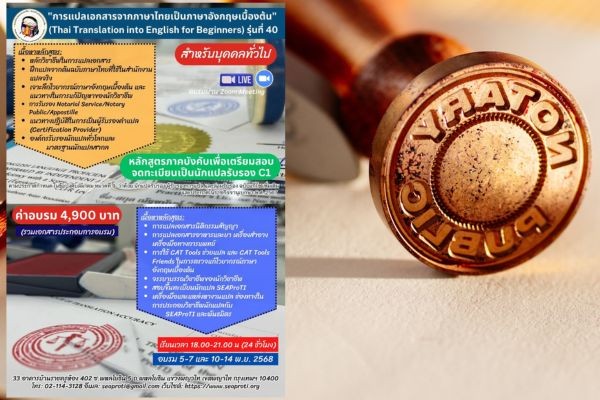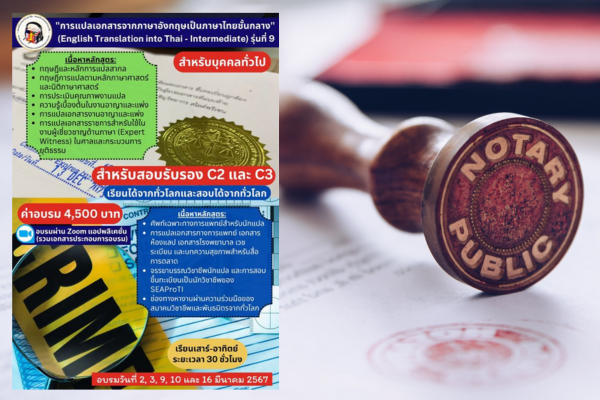Diplomatic Discourse and the Thai–Cambodian Border Conflict: A Comparative Analysis of UNGA80 Statements
Author: Wanitcha Sumanat, President, Southeast Asian Association of Professional Translators and Interpreters (SEAProTI)
28 September 2025, Bangkok – This article presents an academic analysis of the statements delivered by Cambodia and Thailand at the 80th Session of the United Nations General Assembly (UNGA80) on 27 September 2025. Using the framework of Critical Discourse Analysis (CDA), it examines meaning-making, problem-framing, and legitimation strategies employed by both states. The analysis reveals that Cambodia portrays itself as a “small peace-loving state and victim of a border conflict,” highlighting domestic peace achievements and the role of external mediators. In contrast, Thailand projects itself as a “responsible state defending sovereignty and aligned with international norms,” invoking ASEAN and UN mechanisms, as well as its record on human rights and development. The findings demonstrate how narrative contestation in multilateral arenas influences international legitimacy and regional mediation processes.
Keywords: diplomatic discourse, UNGA80, border conflict, multilateralism, international law
1. Introduction
The 80th Session of the United Nations General Assembly was convened under the theme “Better Together: 80 years and more for peace, development and human rights”. Marking the UN’s 80th anniversary, the session unfolded amid both aspirations for renewed multilateralism and heightened regional tensions (United Nations, 2024). The fact that both the Cambodian and Thai Foreign Ministers delivered statements on the same day concerning their border dispute highlights how the UNGA has become a diplomatic stage for competing narratives of legitimacy.
2. Methodology
This article employs Critical Discourse Analysis (CDA), focusing on three dimensions: (1) problem framing, (2) legitimation strategies, and (3) self/other representation. The analysis compares the rhetoric of both states’ statements, with attention to how each constructs its own legitimacy while delegitimizing the other.
3. Findings
3.1 State Identity Construction
- Cambodia: Constructed the image of a small state that overcame civil war and genocide through the “win–win policy” of former Prime Minister Hun Sen, and presented itself as a “net exporter of peace” by deploying over 10,000 troops to UN peacekeeping missions (Prak Sokhonn, 2025).
- Thailand: Emphasized its identity as a “responsible state,” citing achievements in human rights and public health such as Universal Health Coverage (UHC) and the clearance of nearly all mine-contaminated areas (Sihasak, 2025).
3.2 Actor–Victim Construction
- Cambodia: Accused Thailand of using force and forcibly evicting Cambodian civilians in violation of the ceasefire and international law. Repeatedly stressed that Cambodia “never fired first” and had exercised restraint.
- Thailand: Countered by framing Cambodia as the aggressor, citing artillery fire, drone incursions, and civilian and military casualties on the Thai side.
3.3 Mediation and Legitimacy Sources
- Cambodia: Elevated the role of the United States, particularly former President Donald Trump, as the broker of the ceasefire, even nominating him for the Nobel Peace Prize. Also invoked ASEAN and UN support.
- Thailand: Stressed reliance on ASEAN mechanisms (bilateral border committees, Putrajaya ceasefire) and UN frameworks (Human Rights Council, Mine Ban Treaty) as legitimate channels.
3.4 Normative References and UN Reform
Both states reaffirmed commitment to the UN Charter and multilateralism. Cambodia advocated incremental reform, including expanding non-permanent Security Council seats and strengthening border monitoring. Thailand emphasized the UN80 Initiative as a comprehensive reform to make the UN “fit for the future.”
4. Discussion
The two statements illustrate a clear case of narrative contestation, where states deploy political truths rather than verifiable legal facts in a multilateral forum. Cambodia’s victim narrative appeals to external mediation and moral authority, while Thailand’s responsible sovereignty narrative emphasizes rule-based mechanisms and demonstrable domestic achievements. This contest shapes international perceptions and impacts ASEAN’s mediation space.
5. Recommendations
To prevent the UNGA from serving merely as a rhetorical battleground, the following measures are proposed:
- Establish a joint ASEAN–UN border monitoring mission with time-bound mandates and public reporting.
- Develop a “common basemap” based on historical treaties and modern geospatial technology.
- Regulate public rhetoric by both states to avoid stigmatizing accusations in multilateral fora.
- Introduce measurable progress indicators such as monthly incidents, demined square kilometers, frequency of bilateral meetings, and compensation cases for affected civilians.
6. Conclusion
The UNGA80 statements of Cambodia and Thailand exemplify the use of diplomatic discourse to construct state legitimacy. The competing narratives not only reflect bilateral tensions but also expose challenges to multilateralism in the 21st century. Sustainable peace will require verifiable mechanisms and transparent joint actions, rather than reliance on rhetorical contestation in global fora
Comparative Table
Cambodia vs. Thailand (UNGA80, 27 September 2025)
| Issue | Cambodia (Prak Sokhonn) | Thailand (Sihasak Phuangketkeow) |
|---|---|---|
| State Identity | “Small state – peace-loving – victim”Keywords: peace, small state, victim | “Responsible state – defender of sovereignty – global partner”Keywords: responsible state, sovereignty, human rights |
| Legitimacy Capital | Domestic peace (win–win policy, reconciliation)10,000 troops deployed in UN PKOsTrump nominated for Nobel Peace Prize | Human rights record (HRC member, C3 Chair)UHC and Village Health Volunteers99% landmine clearance |
| Actor–Victim Framing | Accuses Thailand of force, eviction, unilateral mapsInsists “Cambodia never fired first” | Accuses Cambodia of artillery fire, drone incursionsVictims: Thai civilians and soldiersReinforces sovereignty and territorial integrity |
| Mediators/Support | United States (Trump, ceasefire broker)ASEAN Chair (Malaysia)UN SG and international community | ASEAN mechanisms (border committees, Putrajaya ceasefire)UN frameworks (HRC, Mine Ban Treaty) |
| Normative Frame | Peace threatened from outsideCivilian rights violationsInternational treaties and maps | Sovereignty and territorial integrityHuman rights and developmentBilateral and ASEAN mechanisms |
| Proposed Solutions | Strict adherence to ceasefireRespect treaties and agreementsASEAN + UN mediationTransform borders into “zones of peace and friendship” | Use bilateral–ASEAN border mechanismsApply UN80 Initiative, Pact for the FutureDialogue, trust, good faith“Path of peace” while defending sovereignty |
| UN Reform | Supports incremental reformExpand non-permanent UNSC seatsStrengthen border monitoring missions | Supports comprehensive reformAdvances UN80 InitiativeReform to make UN “fit for the future” |
Interpretation:
Cambodia uses a victim narrative, leveraging external mediation and civilian rights to assert legitimacy as a peace-loving small state. Thailand employs a responsible sovereignty narrative, combining sovereignty defense with human rights and development achievements to project itself as a responsible global actor.
References
- Prak Sokhonn. (2025, September 27). Full statement at the General Debate of the 80th Session of the United Nations General Assembly. Ministry of Foreign Affairs and International Cooperation of Cambodia / UN Web TV.
- Sihasak Phuangketkeow. (2025, September 27). Statement at the General Debate of the 80th Session of the United Nations General Assembly. Ministry of Foreign Affairs of Thailand / UN Web TV.
- United Nations. (2024, September 22). Pact for the Future: Outcome document of the Summit of the Future. United Nations.
About Certified Translators, Translation Certifiers, and Certified Interpreters of SEAProTI
The Southeast Asian Association of Professional Translators and Interpreters (SEAProTI) has formally announced the qualifications and requirements for registration of Certified Translators, Translation Certification Providers, and Certified Interpreters in Sections 9 and 10 of the Royal Gazette, published by the Secretariat of the Cabinet, Office of the Prime Minister of Thailand, on 25 July 2024 (Vol. 141, Part 66 Ng, p. 100). Certified Translators, Translation Certification Providers, and Certified Interpreters
The Council of State has proposed the enactment of a Royal Decree, granting registered translators and recognized translation certifiers from professional associations or accredited language institutions the authority to provide legally valid translation certification (Letter to SEAProTI dated April 28, 2025)
SEAProTI is the first professional association in Thailand and Southeast Asia to implement a comprehensive certification system for translators, certifiers, and interpreters.
Head Office: Baan Ratchakru Building, No. 33, Room 402, Soi Phahonyothin 5, Phahonyothin Road, Phaya Thai District, Bangkok 10400, Thailand
Email: hello@seaproti.com | Tel.: (+66) 2-114-3128 (Office hours: Mon–Fri, 09:00–17:00)
วาทกรรมการทูตกับความขัดแย้งชายแดนไทย–กัมพูชา: การวิเคราะห์เชิงเปรียบเทียบคำแถลง UNGA80
ผู้แต่ง วณิชชา สุมานัส นายกสมาคมวิชาชีพนักแปลและล่ามแห่งเอเชียตะวันออกเฉียงใต้ (SEAProTI)
28 กันยายน 2568, กรุงเทพมหานคร – บทความนี้นำเสนอการวิเคราะห์เชิงวิชาการของคำแถลงของกัมพูชาและประเทศไทยในเวทีสมัชชาสหประชาชาติ ครั้งที่ 80 (UNGA80) เมื่อวันที่ 27 กันยายน 2025 โดยใช้กรอบการวิเคราะห์วาทกรรมวิพากษ์ (Critical Discourse Analysis: CDA) เพื่อพิจารณาการสร้างความหมาย การกำหนดกรอบปัญหา และการสร้างความชอบธรรมของแต่ละรัฐ ผลการวิเคราะห์พบว่า กัมพูชาสร้างภาพลักษณ์ของ “รัฐเล็กผู้รักสันติและตกเป็นเหยื่อความขัดแย้งชายแดน” โดยอ้างถึงสันติภาพภายในและบทบาทของผู้ไกล่เกลี่ยภายนอก ขณะที่ประเทศไทยสร้างภาพลักษณ์ของ “รัฐผู้รับผิดชอบ ปกป้องอธิปไตย และสอดคล้องกับบรรทัดฐานสากล” โดยอ้างถึงกลไกอาเซียนและสหประชาชาติ รวมถึงผลงานด้านสิทธิมนุษยชนและการพัฒนา ผลการศึกษานี้สะท้อนให้เห็นถึงการแข่งขันเชิงวาทกรรม (narrative contestation) ในเวทีพหุภาคี ซึ่งมีผลต่อทั้งความชอบธรรมระหว่างประเทศและกระบวนการไกล่เกลี่ยในระดับภูมิภาค
คำสำคัญ: วาทกรรมการทูต, UNGA80, ความขัดแย้งชายแดน, พหุภาคีนิยม, กฎหมายระหว่างประเทศ
1. บทนำ
การประชุมสมัชชาสหประชาชาติ ครั้งที่ 80 จัดขึ้นภายใต้หัวข้อ “Better Together: 80 years and more for peace, development and human rights” และเป็นวาระครบรอบ 80 ปีของสหประชาชาติ ภายใต้บรรยากาศที่มีทั้งความหวังในการปฏิรูปพหุภาคีนิยม และความตึงเครียดจากความขัดแย้งในหลายภูมิภาค (United Nations, 2024) การที่รัฐมนตรีต่างประเทศกัมพูชาและไทยกล่าวถ้อยแถลงในวันเดียวกันเกี่ยวกับปัญหาชายแดน จึงกลายเป็นปรากฏการณ์ทางการทูตที่สะท้อนถึงการใช้เวทีโลกเพื่อแข่งขันกันสร้างความหมายและความชอบธรรมของตนเอง
2. ระเบียบวิธี
บทความนี้ใช้แนวคิดวิเคราะห์วาทกรรมวิพากษ์ (CDA) โดยมุ่งเน้นการศึกษา (1) กรอบปัญหา (problem framing) (2) ยุทธศาสตร์การสร้างความชอบธรรม (legitimation strategies) และ (3) การสร้างภาพตัวตนของรัฐ (self/other representation) เพื่อเปรียบเทียบถ้อยแถลงของทั้งสองฝ่าย
3. ผลการวิเคราะห์
3.1 กรอบการสร้างอัตลักษณ์ของรัฐ
กัมพูชา: นำเสนอภาพตนเองเป็นรัฐเล็กที่ผ่านพ้นสงครามกลางเมืองและการฆ่าล้างเผ่าพันธุ์ ด้วย “นโยบายชนะ–ชนะ” (win-win policy) ของอดีตนายกรัฐมนตรีฮุนเซน และแสดงตนเป็น “ผู้ส่งออกสันติภาพ” ผ่านการส่งทหารกว่าหมื่นนายเข้าร่วมภารกิจรักษาสันติภาพของ UN (Prak Sokhonn, 2025)
ไทย: เน้นภาพลักษณ์ “รัฐผู้รับผิดชอบ” โดยยืนยันความสำเร็จในด้านสิทธิมนุษยชนและสาธารณสุข เช่น ความครอบคลุมด้านสาธารณสุขถ้วนหน้า (UHC) และการเคลียร์พื้นที่ทุ่นระเบิดเกือบทั้งหมด (Sihasak, 2025)
3.2 การกำหนดผู้กระทำและผู้ถูกกระทำ
กัมพูชา: กล่าวหาไทยว่าใช้กำลังทหารและการขับไล่พลเรือน ขัดต่อข้อตกลงหยุดยิงและหลักกฎหมายระหว่างประเทศ พร้อมย้ำว่ากัมพูชา “มิได้ยิงก่อน” และใช้ความอดกลั้น
ไทย: โต้แย้งโดยระบุว่ากัมพูชาเป็นฝ่ายเริ่มความรุนแรง ทั้งการยิงปืนใหญ่และการส่งโดรนข้ามแดน พร้อมกล่าวถึงพลเรือนและทหารไทยที่ตกเป็นเหยื่อ
3.3 การอ้างอิงผู้ไกล่เกลี่ยและทุนความชอบธรรม
กัมพูชา: ให้ความสำคัญกับบทบาทของสหรัฐอเมริกา โดยเฉพาะประธานาธิบดีโดนัลด์ ทรัมป์ที่มีบทบาทในการหยุดยิง และถึงขั้นเสนอชื่อเข้าชิงรางวัลโนเบลสาขาสันติภาพ
ไทย: เน้นความร่วมมือกับกลไกอาเซียนและสหประชาชาติ ยืนยันว่าการแก้ไขข้อพิพาทต้องอยู่ในกรอบที่มีอยู่แล้ว
3.4 การอ้างบรรทัดฐานสากลและการปฏิรูป UN
ทั้งสองฝ่ายต่างยืนยันการยึดมั่นกฎบัตรสหประชาชาติและความสำคัญของพหุภาคีนิยม กัมพูชาสนับสนุนการปฏิรูปที่เป็นรูปธรรม เช่น เพิ่มที่นั่งไม่ถาวรในคณะมนตรีความมั่นคง ขณะที่ไทยเน้น “UN80 Initiative” เพื่อทำให้ UN สอดคล้องกับอนาคต
4. อภิปราย
คำแถลงทั้งสองสะท้อน “การแข่งขันเชิงการเล่าเรื่อง” (narrative contestation) ซึ่งรัฐต่างใช้เวที UNGA ในการกำหนดความจริงเชิงการเมือง (political truth) มากกว่าการหาข้อเท็จจริงเชิงกฎหมาย ความแตกต่างของกรอบเรื่องเล่ามีผลโดยตรงต่อการรับรู้ของประชาคมระหว่างประเทศและการขับเคลื่อนกระบวนการไกล่เกลี่ยภายในอาเซียน
5. ข้อเสนอแนะ
เพื่อหลีกเลี่ยงการใช้เวทีโลกเป็นเพียงพื้นที่โต้เถียงเชิงวาทศิลป์ ควรมี (1) กลไกสังเกตการณ์ชายแดนร่วมภายใต้กรอบอาเซียน–UN (2) การสร้าง “แผนที่ฐานร่วม” (common basemap) ตามสนธิสัญญาเดิมและเทคโนโลยีภูมิสารสนเทศ (3) การควบคุมถ้อยแถลงสาธารณะเพื่อหลีกเลี่ยงการตีตราเชิงลบ และ (4) การกำหนดตัวชี้วัดความคืบหน้า เช่น จำนวนเหตุปะทะและพื้นที่ปลอดทุ่นระเบิด
6. สรุป
คำแถลง UNGA80 ของกัมพูชาและไทยเป็นตัวอย่างสำคัญของการใช้วาทกรรมทางการทูตในการสร้างความชอบธรรมของรัฐ การแข่งขันเชิงเรื่องเล่าดังกล่าวไม่เพียงสะท้อนความตึงเครียดชายแดน แต่ยังเผยให้เห็นถึงความท้าทายของพหุภาคีนิยมในศตวรรษที่ 21 การสร้างสันติภาพที่ยั่งยืนจำเป็นต้องอาศัยกลไกที่ตรวจสอบได้และการปฏิบัติการร่วมที่โปร่งใส มากกว่าการอาศัยถ้อยแถลงในเวทีโลกเพียงลำพัง
เอกสารอ้างอิง
- Prak Sokhonn. (2025, September 27). Full statement at the General Debate of the 80th Session of the United Nations General Assembly. Ministry of Foreign Affairs and International Cooperation of Cambodia / UN Web TV.
- Sihasak Phuangketkeow. (2025, September 27). Statement at the General Debate of the 80th Session of the United Nations General Assembly. Ministry of Foreign Affairs of Thailand / UN Web TV.
- United Nations. (2024, September 22). Pact for the Future: Outcome document of the Summit of the Future. United Nations.
ตารางเปรียบเทียบเชิงประเด็น
คำแถลง Cambodia vs Thailand (UNGA80, 27 กันยายน 2025)
| ประเด็น | กัมพูชา (Prak Sokhonn) | ไทย (Sihasak Phuangketkeow) |
|---|---|---|
| อัตลักษณ์ของรัฐ | “รัฐเล็ก–สันติวิถี–เหยื่อสงครามชายแดน”คำหลัก: peace, small state, victim | “รัฐรับผิดชอบ–ปกป้องอธิปไตย–เชื่อมกับโลก”คำหลัก: responsible state, sovereignty, human rights |
| ทุนความความชอบธรรม (legitimacy capital) | สันติภาพภายใน (win-win policy, reconciliation)การส่งทหาร 10,000 นายเข้าร่วม UN PKOs เสนอชื่อ Donald Trump รับรางวัลโนเบลสันติภาพ | ผลงานด้านสิทธิมนุษยชน (HRC member, C3 Chair) UHC และ Village Health Volunteers การเคลียร์ทุ่นระเบิด 99% |
| การกำหนดผู้กระทำ/ผู้ถูกกระทำ | กล่าวหาว่าไทยใช้กำลัง : ขับไล่พลเรือนอ้างใช้ “แผนที่ฝ่ายเดียว”ย้ำ “Cambodia never fired first” | กล่าวหากัมพูชาลอบยิง: ใช้โดรนลาดตระเวนอ้างเหตุพลเรือนและทหารไทยบาดเจ็บเน้นหลัก “sovereignty, territorial integrity” |
| ผู้ไกล่เกลี่ย/ผู้สนับสนุน | สหรัฐอเมริกา (Donald Trump, ceasefire broker)ASEAN Chair (Malaysia)UN SG และประชาคมโลก | ASEAN mechanisms (bilateral border committees, Putrajaya ceasefire)UN mechanisms (Human Rights Council, mine ban treaty) |
| กรอบการอ้างอิงหลัก | สันติภาพที่ถูกคุกคามจากภายนอกสิทธิมนุษยชนของพลเรือนกัมพูชาสนธิสัญญาและแผนที่ระหว่างประเทศ | อธิปไตย–บูรณภาพแห่งดินแดนสิทธิมนุษยชน–สาธารณสุข–การพัฒนากลไกทวิภาคี–อาเซียน |
| กลไก/ทางออกที่เสนอ | เคารพ ceasefire อย่างจริงจังเคารพสนธิสัญญา/ข้อตกลงเดิมASEAN + UN สนับสนุนการไกล่เกลี่ยTransform borders → “zones of peace, friendship” | ยึดกลไกชายแดนทวิภาคี–อาเซียนใช้ UN80 Initiative, Pact for the Futureเน้น dialogue, trust, good faithเลือก “path of peace” แต่พร้อมปกป้องอธิปไตย |
| การปฏิรูป UN | สนับสนุน incremental reformเพิ่มที่นั่ง UNSC แบบไม่ถาวรเสริมภารกิจสังเกตการณ์พรมแดน | สนับสนุน comprehensive reformผลักดัน UN80 initiativeทำให้ UN “fit for the future” |
เกี่ยวกับนักแปลรับรอง ผู้รับรองการแปล และล่ามรับรองของสมาคมวิชาชีพนักแปลและล่ามแห่งเอเชียตะวันออกเฉียงใต้
* สมาคมวิชาชีพนักแปลและล่ามแห่งเอเชียตะวันออกเฉียงใต้ (SEAProTI) ได้ประกาศหลักเกณฑ์และคุณสมบัติผู้ที่ขึ้นทะเบียนเป็น “นักแปลรับรอง (Certified Translators) และผู้รับรองการแปล (Translation Certification Providers) และล่ามรับรอง (Certified Interpreters)” ของสมาคม หมวดที่ 9 และหมวดที่ 10 ในราชกิจจานุเบกษา ของสำนักเลขาธิการคณะรัฐมนตรี ในสำนักนายกรัฐมนตรี แห่งราชอาณาจักรไทย ลงวันที่ 25 ก.ค. 2567 เล่มที่ 141 ตอนที่ 66 ง หน้า 100 อ่านฉบับเต็มได้ที่: นักแปลรับรอง ผู้รับรองการแปล และล่ามรับรอง
** สำนักคณะกรรมการกฤษฎีกาเสนอให้ตราเป็นพระราชกฤษฎีกา โดยกำหนดให้นักแปลที่ขึ้นทะเบียน รวมถึงผู้รับรองการแปลจากสมาคมวิชาชีพหรือสถาบันสอนภาษาที่มีการอบรมและขึ้นทะเบียน สามารถรับรองคำแปลได้ (จดหมายถึงสมาคม SEAProTI ลงวันที่ 28 เม.ย. 2568)
*** สมาคมวิชาชีพนักแปลและล่ามแห่งเอเชียตะวันออกเฉียงใต้ เป็นสมาคมวิชาชีพแห่งแรกในประเทศไทยและภูมิภาคเอเชียตะวันออกเฉียงใต้ที่มีระบบรับรองนักแปลรับรอง ผู้รับรองการแปล และล่ามรับรอง
สำนักงานใหญ่: อาคารบ้านราชครู เลขที่ 33 ห้อง 402 ซอยพหลโยธิน 5 ถนนพหลโยธิน แขวงพญาไท เขตพญาไท กรุงเทพมหานคร 10400 ประเทศไทย
อีเมล: hello@seaproti.com โทรศัพท์: (+66) 2-114-3128 (เวลาทำการ: วันจันทร์–วันศุกร์ เวลา 09.00–17.00 น.)
